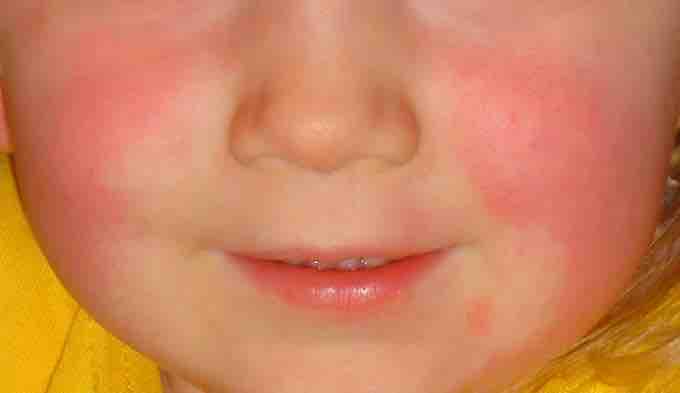A Bacteriophage Hitchhiker
Scarlet fever is an infectious disease which most commonly affects 4-8 year-old children. Symptoms include sore throat, fever, and a characteristic red rash . It is usually spread by inhalation. There is no vaccine, but the disease is effectively treated with antibiotics. Scarlet fever is caused by an erythrogenic toxin, a substance produced by the bacterium Streptococcus pyogenes (group A strep. ) when it is infected by a certain bacteriophage.

Scarlet Fever
The rosy cheeks and white area around the mouth are typical symptoms of scarlet fever.
Scarlet fever is caused by secretion of pyrogenic (fever inducing) exotoxins by the infected Streptococcus. Exotoxin A (speA) is probably the best studied of these toxins. It is carried by the bacteriophage T12, which integrates into the Streptococcal genome, from where the toxin is transcribed.
The phage itself integrates into a serine tRNA gene on the chromosome. The T12 virus itself has not been placed into a taxon by the International Committee on Taxonomy of Viruses. It has a double stranded DNA genome; on morphological grounds it appears to be a member of the Siphoviridae. The speA gene was cloned and sequenced in 1986. It is 753 base pairs in length and encodes a 29.244 kiloDalton (kDa) protein. The protein contains a putative 30 amino acid signal peptide. Removal of the signal sequence gives a predicted molecular weight of 25.787 (kDa) for the secreted protein. Both a promoter and a ribosome-binding site (Shine-Dalgarno sequence) are present upstream of the gene. A transcriptional terminator is located 69 bases downstream from the translational termination codon. The carboxy terminal portion of the protein exhibits extensive homology with the carboxy terminus of Staphylococcus aureus enterotoxins B and C1. Streptococcal phages other than T12 may also carry the speA gene.